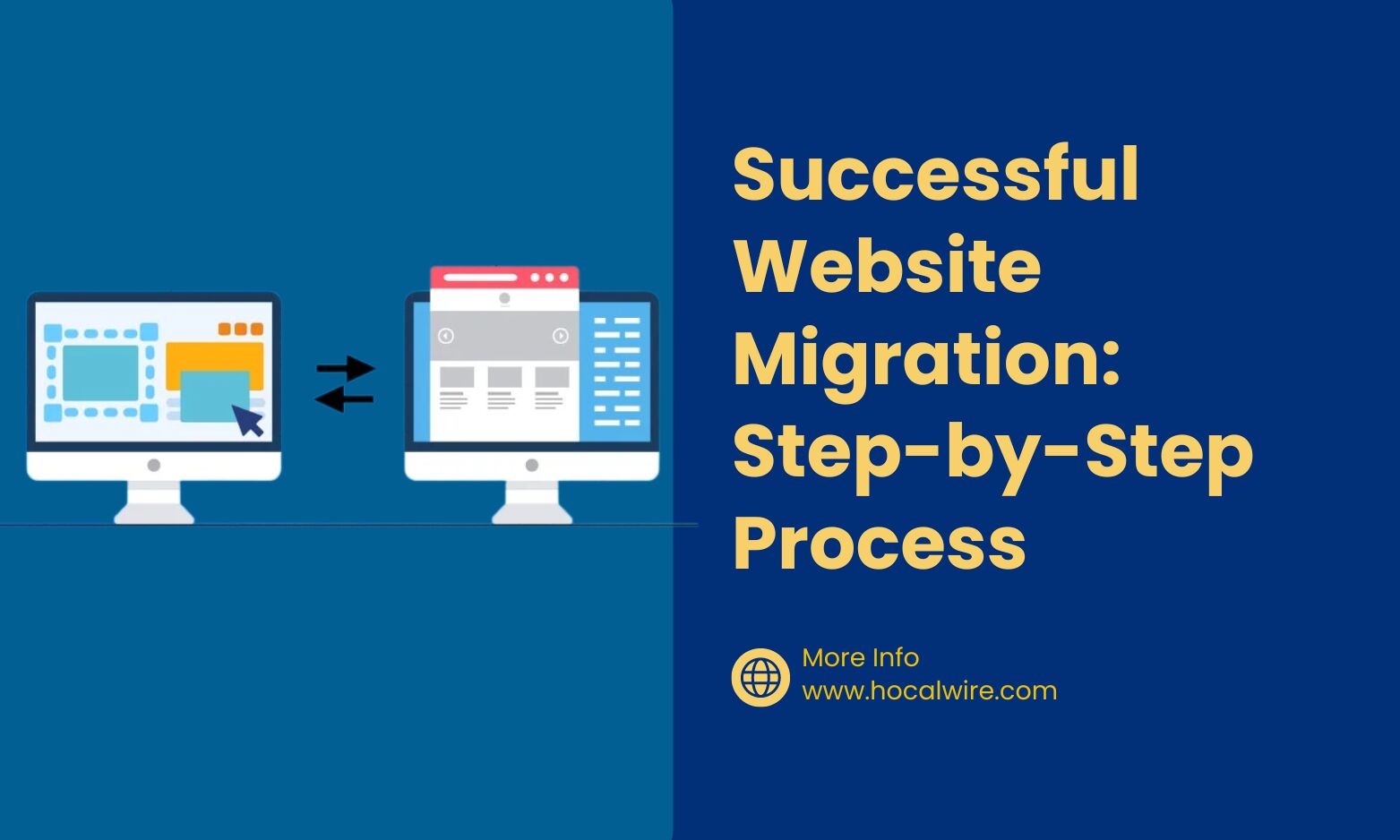



Successful Website Migration: Step-by-Step Process
- Site migration involves moving a website to a new domain, host, or CMS. It includes planning, testing, and creating 301 redirects to maintain SEO and ensure a smooth transition.
- 1) What is a Site Migration?
- 2) Planning and Strategy
- 3) Set Up a Test Environment
- 4) SEO Considerations
- 5) Pre-Migration Checklist
- 6) Migration Process
- 7) Post-Migration Steps
- 8) Ongoing Monitoring and Optimization
Transferring a website from one environment—such as a new domain, host, or content management system—to another is a crucial procedure known as "site migration." When done right, a site migration can greatly enhance the functionality, user experience, and search engine optimisation of your website. It can, however, also be dangerous, with broken linkages and possible loss of traffic. This thorough guide will help to guarantee a seamless and fruitful site migration.
When done right, a site migration is a chance to improve site performance, enhance user experience and boost search presence.
What is a Site Migration?
A site migration refers to the process of making major changes involving a website.
The act of making significant alterations to a website is called a "Site Migration." This could involve changing a website's domain name or hosting company, transferring to an alternative content management system (CMS), or combining several websites into one.
1. Planning and Strategy
Define the Objectives
Start by clearly defining the goals of your site migration. Whether it’s improving site speed, rebranding, consolidating content, or moving to a more robust platform, understanding the objectives will guide every decision you make throughout the process.
Conduct a Pre-Migration Audit
Perform a thorough audit of your existing site. Document all URLs, traffic patterns, SEO performance, and backlinks. Tools like Google Analytics, Screaming Frog, and SEMrush can help gather this data. This audit serves as a baseline to measure the success of your migration and ensures that nothing crucial is overlooked.
2. Set Up a Test Environment
Clone Your Site
Create a duplicate of your current site in a test environment. This allows you to troubleshoot issues without affecting the live site. Make sure the test environment is as close to the production environment as possible to accurately simulate the migration process.
Test All Functionalities
Thoroughly test every aspect of your site in the test environment. Check for broken links, ensure that forms and interactive elements work correctly, and verify that all content is displaying as expected. Pay special attention to custom scripts and third-party integrations.
3. SEO Considerations
Create a 301 Redirect Map
One of the most critical aspects of site migration is maintaining your SEO rankings. Create a comprehensive 301 redirect map to ensure that all old URLs correctly redirect to their new counterparts. This prevents users from encountering 404 errors and preserves your site's SEO equity.
Update Internal Links
Verify that all internal links lead to the updated URLs. This is especially crucial if you're altering the domain or site structure. If required, use tools to automate the process; but, to assure accuracy, double-check critical pages by hand.
4. Pre-Migration Checklist
Backup Your Current Site
Make sure you have a complete backup of your current website before making any changes. This acts as a safety precaution if something goes wrong with the migration procedure.
Notify Stakeholders
Inform all relevant stakeholders about the upcoming migration. This includes your team, clients, and partners. Clear communication ensures everyone is on the same page and can help troubleshoot any issues that arise.
5. Migration Process
Update DNS Settings
When migrating to a new domain or host, update your DNS settings to point to the new server. This step can take some time to propagate, so plan accordingly to minimize downtime.
Launch the New Site
Launch your new website when it's all set. Keep a watchful eye on the procedure to identify any problems early. It is advisable to be ready to resolve issues when they come up, especially in the initial hours following launch.
6. Post-Migration Steps
Conduct a Post-Migration Audit
Conduct an additional thorough audit to contrast the newly constructed site with the pre-migration baseline. Make sure all redirects are working properly, look for broken links, and confirm that traffic and SEO data are steady.
Submit New Sitemap to Search Engines
To speed up the indexing process, submit the updated sitemap to search engines like Google and Bing. To keep an eye on the indexing process and address any potential problems, make use of Bing Webmaster Tools and Google Search Console.
7. Ongoing Monitoring and Optimization
Monitor Traffic and Performance
Keep an eye on the performance, traffic, and SEO rankings of your website at all times. For this, resources like Google Analytics, Google Search Console, and other SEO platforms are priceless. Keep an eye out for any abrupt dips in traffic or other irregularities that can point to problems.
Optimize Based on Data
Use the data collected during your post-migration monitoring to make any necessary adjustments. This might include fixing broken links, optimizing load times, or addressing any SEO issues that have arisen.
Conclusion
Careful preparation, extensive testing, and continuous monitoring are necessary for a successful site move. By following these steps, you can reduce the risks and ensure the move goes well while achieving your migration goals. Always remember that planning and paying attention to detail are essential for a successful move. You can improve your site's SEO rankings, user experience, and performance by implementing the correct plan.

